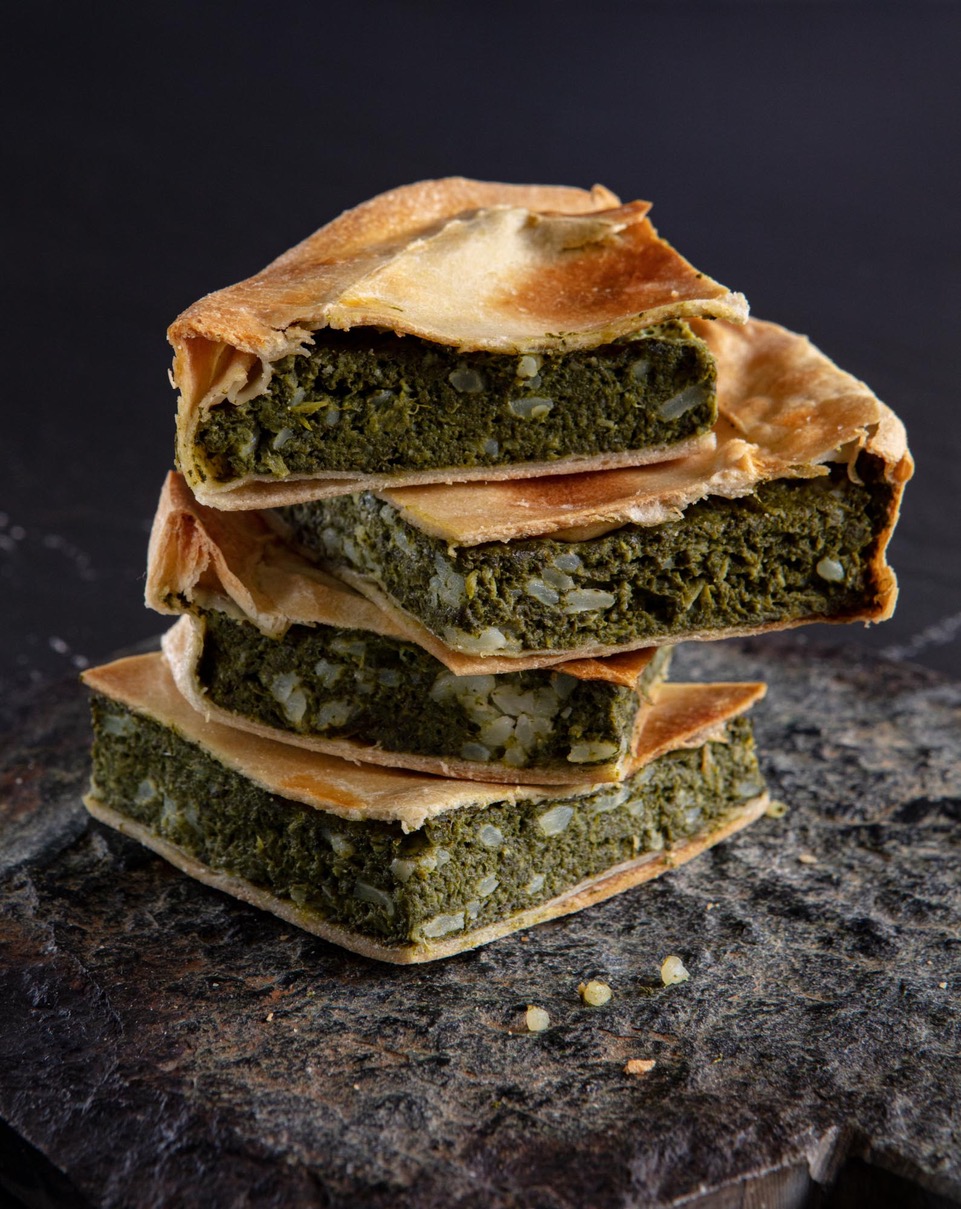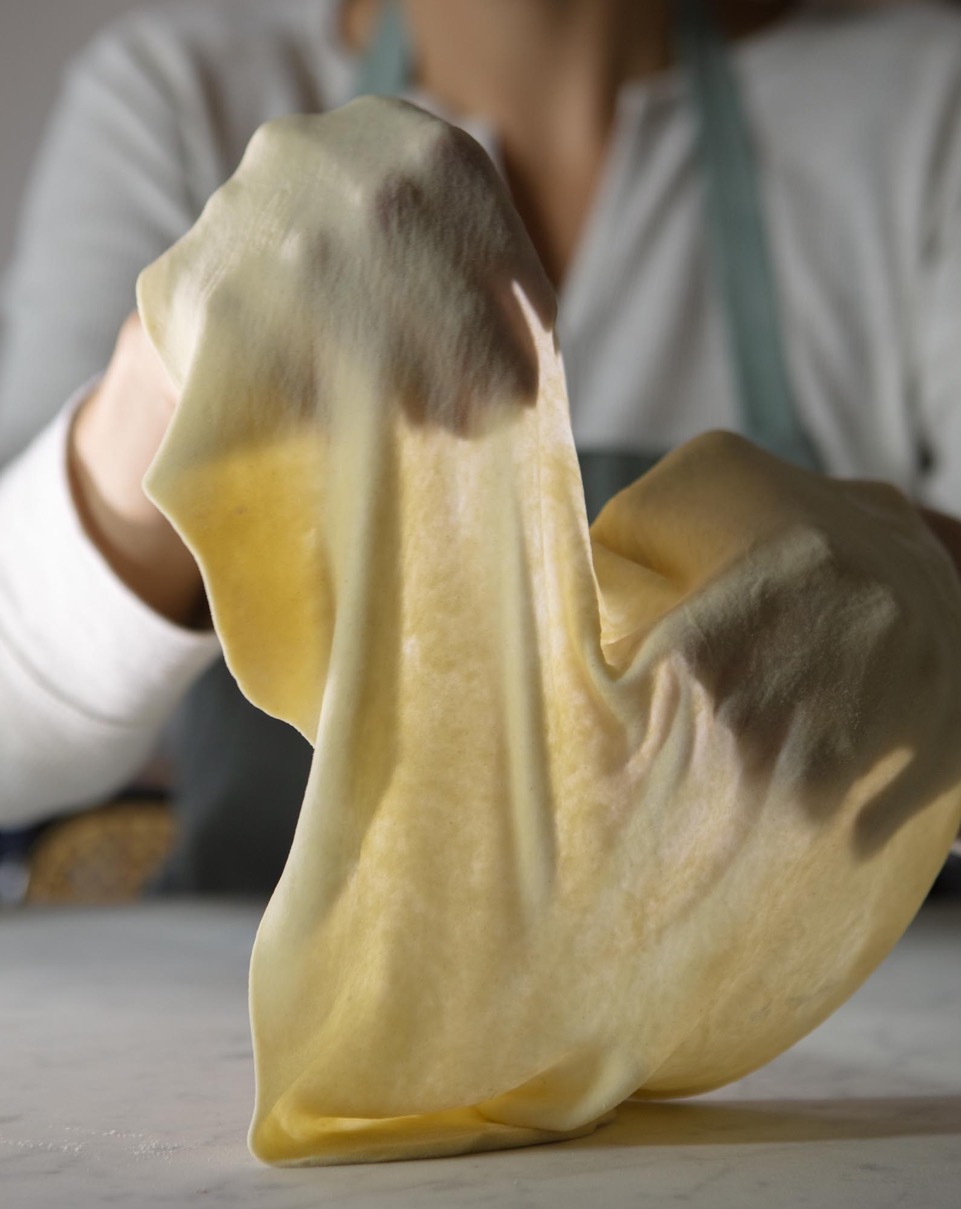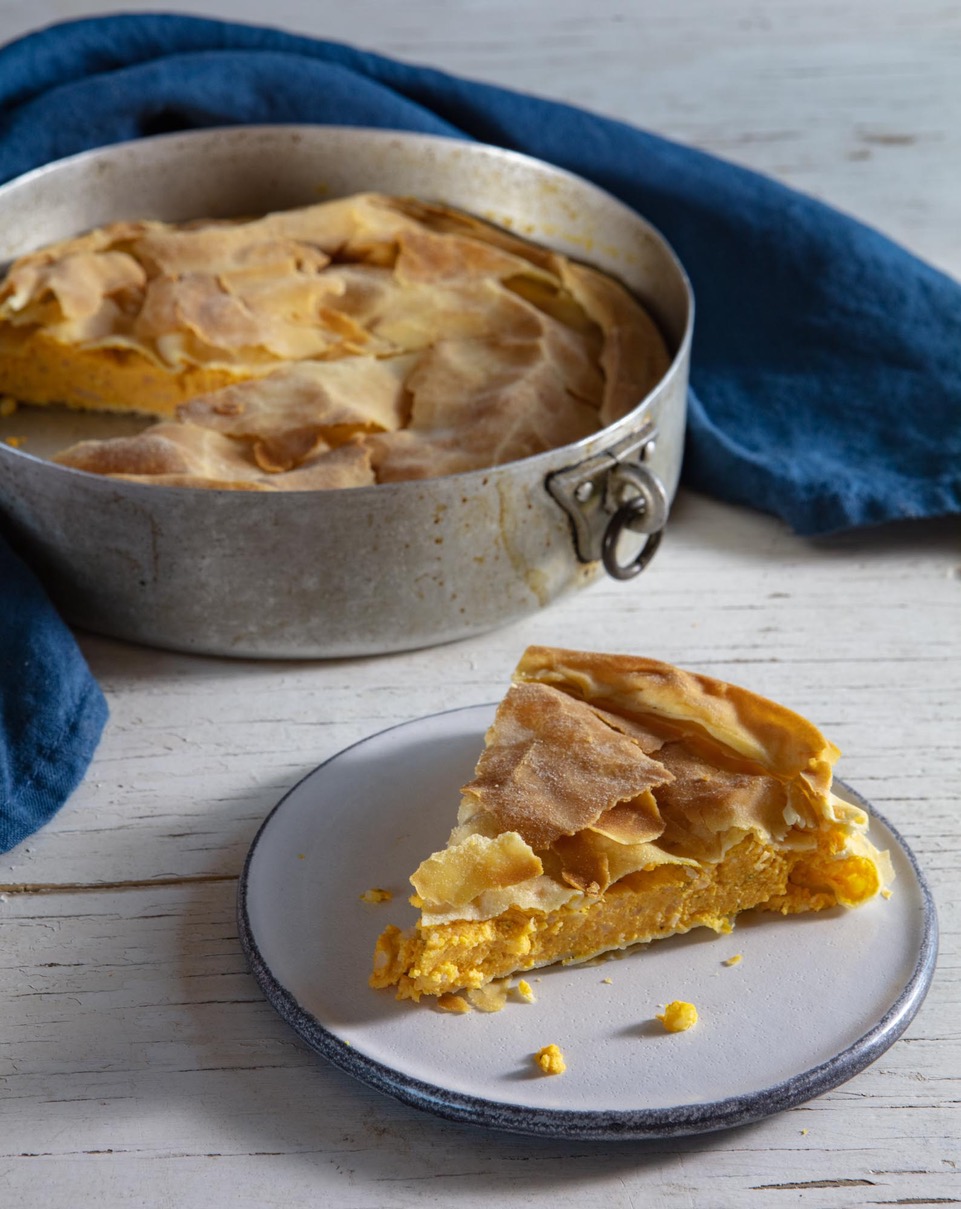Step into any self-respecting bakery in Liguria, and after your eyes adjust from being dazzled by the breathtaking array of focaccia varieties on display, you’ll notice another regional specialty tucked away in the corner–the unassuming yet utterly delicious torte salate. As omnipresent as focaccia in Ligurian cuisine, but far less heralded, these savory tarts and pies are rustic affairs standing only about an inch tall. A crisp, paper-thin, golden crust encases a simple (always vegetarian) filling–perhaps onions, pumpkin, rice, or hearty greens like chard or borage.
Liguria is a region defined by contrasts–the rough and rocky hills right next to the clear sea; the historical opulence of the maritime powerhouse Genova juxtaposed against the humble resourcefulness of the rugged inland areas known as the entroterra. The thrifty mindset of the latter pervaded the entire region, and Ligurian torte salate are a perfect example of this resourceful cuisine’s ingenuity. Though surrounded by world-renowned culinary destinations like France, Piedmont, Emilia-Romagna, and Tuscany, Ligurian cuisine itself has been largely overlooked beyond favorites like focaccia and pesto. Yet this region offers a trove of inventive, seasonal, and waste-conscious recipes that are often plant-forward. As a cuisine born of poverty, meat was used sparingly, while vegetables were cleverly transformed into hearty main dishes using key flavor boosters like salt-packed anchovies, pine nuts, dried mushrooms, and aged cheeses. Many dishes, like the torta salata, ingeniously repurpose leftovers into thrifty, pragmatic creations that don’t skimp on flavor or heartiness.
While focaccia has achieved global fame, the humble torta remains a beloved local specialty, most often found in bakeries or at locals’ homes. But don’t let their modest appearance fool you. These unsung pies pack huge flavor from traditional Ligurian ingredients and techniques honed over centuries, epitomizing the resourceful, no-waste spirit of the region’s cucina povera. Like so many Ligurian specialties, torte salate transform basic pantry items and whatever seasonal produce is on hand into a portable, hearty meal. This means that you’ll find torte salate with all sorts of fillings–though common variants include turta de gee (with the local sour cheese prescinseua and bietola, a type of chard) and torta baciocca (with potatoes, lard, and onion).
The secret weapon of Ligurian torte salate is pasta matta or “crazy dough.” Pelligrino Artusi, in his seminal cookbook Science in the Kitchen and the Art of Eating Well, assures us that the dough is called “crazy” not because it is capable of some sort of madness, but because of its remarkable versatility. The simple flour and water dough is rolled into paper-thin sheets, then stretched by hand until translucent. Brushed with olive oil and layered in the pan, it bakes into a delicate, gossamer crust–a subtle wrapper that gently envelops the fillings without overpowering them.
If you don’t have plans to travel to Liguria anytime soon, the recipes that follow will allow you to make the stars of this too-often overlooked regional cuisine at home. Take a page from the locals’ playbook and modify the recipes according to whatever is left in your refrigerator: last-night’s vegetables, lettuce past-its-prime, boiled potatoes, and leftover rice will all make a delightful torta.
Recipes courtesy of Liguria, The Cookbook (Rizzoli International), by Laurel Evans

TORTA VERDE
Only about an inch high, a paper-thin, golden crust encases a dark green filling that smells vaguely of mountain pastures and freshly cut grass. There are many different recipes for torta verde throughout Liguria: some contain much more rice or cheese, some call for sautéed onion or garlic. This, however, is my favorite version; I love how the simplicity of it accentuates the fresh flavor of the greens.
Makes one 9-inch tart
INGREDIENTS
- 1 recipe Pasta Matta (see recipe below)
- 1 1/4 kg (2 1/2 lb) Swiss chard or mixed greens (a mix of borage, beet tops, spinach, and escarole would be nice)
- 2 large eggs, lightly beaten
- 100 g (3 1/2 oz) freshly grated Parmigiano Reggiano (about 1 cup, packed)
- 1/2 cup cooked white rice, cooled
- 1 tablespoon minced fresh marjoram
- 1/2 teaspoon salt
PREPARATION
- Preheat oven to 350°F. Prepare the pasta matta according to instructions in the recipe below. Grease a 9-inch round baking dish or springform pan with olive oil; set aside.
- Wash the greens and boil in a large pot of generously salted water until tender, 2 to 3 minutes; drain. When cool enough to handle, wring out excess moisture with your hands, transfer to a cutting board, and finely chop; place in a large bowl. Add eggs, Parmigiano, rice, marjoram, and salt; stir to combine.
- Roll out the pasta matta as thinly as possible and layer it in the bottom of the prepared pan, brushing each layer with oil according to the instructions in the recipe below. As soon as the bottom layers are complete, scoop filling into the pan and spread evenly. Cover the pie with the top layers as explained in the recipe below, brushing each layer with oil. Bake until light golden and cooked through, about 40 minutes. Let cool for at least 30 minutes before slicing and serving. Serve warm or at room temperature.

PASTA MATTA
The sheets should be paper-thin and translucent; roll the dough as thinly as possible with a rolling pin and then stretch with your hands until silky and sheer. Depending on the desired effect, you can pile more or less of these thin sheets underneath or on top of your torta, brushing each layer with olive oil before adding the next. I often opt for two layers underneath the filling and three on top, but this recipe will provide you with enough dough for at least six layers.
Makes enough dough for one 9-inch tart
INGREDIENTS
- 2 cups (9 oz, 255 g) bread flour
- 1/2 cup (120 ml) room temperature water
- 2 tablespoons extra-virgin olive oil, plus more for brushing
- 1/2 teaspoon salt
PREPARATION
- Combine flour and water in the bowl of a stand mixer fitted with a dough hook. Knead on medium-low speed until a shaggy dough forms, about 5 minutes. Add olive oil and salt and continue kneading until dough is soft, smooth, and elastic, about another 7 minutes.
- Remove from mixer, form into a ball, and wrap tightly in plastic wrap. Let rest at room temperature for 30 minutes. Remove plastic wrap (do not discard) and cut the dough equally into 6 pieces. Cover the pieces with the plastic wrap to keep them from drying out, and let rest for another 10 minutes.
- Preheat oven according to specific recipe instructions and lightly brush a 9-inch cake pan (preferably springform) with olive oil; set aside.
- Place a piece of dough on a lightly floured work surface and roll into a disk with a flour-dusted rolling pin. Contrary to rolling out typical pie dough, you will want to roll out the edges first, rather than starting from the center of the disk, since the edges tend to shrink back as you roll. Begin rolling out the edges of the dough, turning the disk in a clockwise motion until it is large, round, and paper-thin. Dust your hands with flour, gently pick up the disk, and drape over the backs of your hands. Carefully stretch the dough, moving your hands away from each other and rotating the dough in order to stretch evenly. When dough is very thin and translucent, lay it over the cake pan. There should be plenty of overlap; it’s okay if it doesn’t sink to the bottom of the dish, as the filling will weigh it down later. Brush the sheet lightly with olive oil. Repeat the rolling and stretching process with one or two more pieces of dough, layering them on top of the sheet in the cake pan, brushing each sheet with olive oil.
- Spoon desired filling on top of the sheets of dough. Lift up a small corner of dough to release any air that is trapped in the pan, then press it back into the pan and lay it over the edge.
